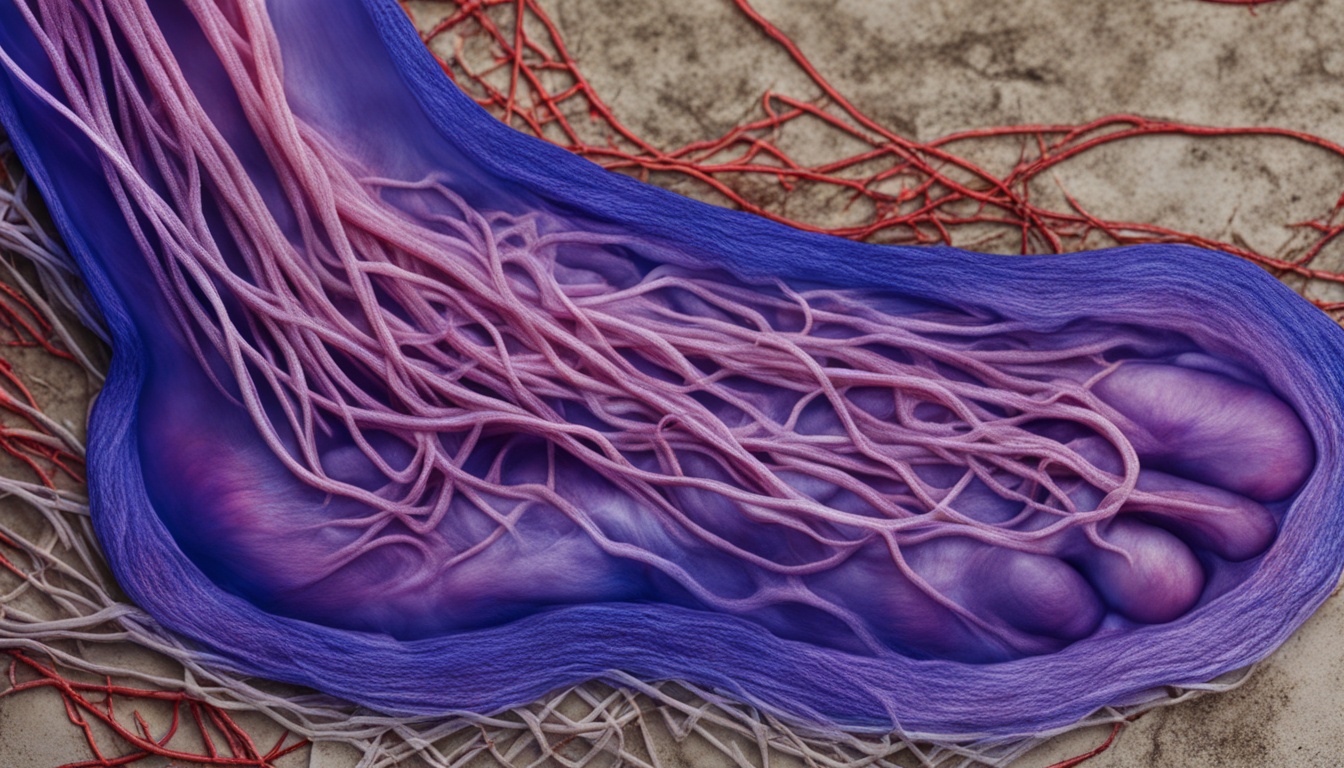Thromboangiitis obliterans is also called Buerger’s disease. It’s a vascular disease that affects blood vessels in the arms and legs. The exact cause is not known, but it’s closely linked to smoking, especially in young people. The disease causes inflammation and clotting in blood vessels. This affects blood flow, causes blood clots, and damages tissues.
Diagnosing this disease looks at several specific factors. These include a history of smoking, symptoms starting before age 50, certain types of arterial blockages, and the absence of atherosclerosis risks. Treating thromboangiitis obliterans focuses on easing symptoms, helping wounds heal, and stopping the need for amputations.
Common treatments include stopping smoking, using drugs to reduce clotting and widen blood vessels, and sometimes surgery. However, these approaches usually just help manage the disease. Researchers are now looking into newer methods like gene therapy and stem cell therapy as more effective treatments.
Key Takeaways:
- Thromboangiitis obliterans is a disease that mainly affects small- to medium-sized blood vessels.
- It is strongly linked to smoking, especially in young adults.
- The condition causes inflammation, blood clots, and reduced blood flow, which can damage tissue.
- Doctors use specific signs like smoking history to diagnose it.
- Treatments focus on easing symptoms, promoting wound healing, and preventing the need for amputation. New methods like gene and stem cell therapy are showing promise.
Symptoms and Clinical Presentation of Thromboangiitis Obliterans
Thromboangiitis obliterans, also known as Buerger’s disease, mainly hits young folks, especially those who smoke (Ates et al., 2006). People with this disease often show symptoms like:
- Claudication: This means pain or cramps in your legs or arms when you move around (Ates et al., 2006; PMC6516882).
- Ischemic ulcers: These are open wounds that won’t heal (PMC6516882).
- Pain at rest: A sharp ache that won’t let up, even if you’re sitting still (Mills, 2003).
- Raynaud’s phenomena: Your fingers or toes get super cold and might turn white or blue with stress or cold (Mills, 2003).
- Vascular complications: This disease can cause inflammation in your veins and other vascular issues (Mills, 2003).
Image: Thromboangiitis obliterans (Buerger’s disease) affects mainly young smokers, showing up as a type of vascular disease.
The signs of thromboangiitis obliterans can vary, but many folks with it feel these symptoms (Ates et al., 2006; Mills, 2003; PMC6516882). Knowing these signs can help doctors diagnose it early. This is key to treating the disease well.
Diagnosis and Treatment of Thromboangiitis Obliterans
Diagnosing thromboangiitis obliterans, or Buerger’s disease, involves looking at specific signs. Doctors check if a patient smoked, started having symptoms before 50, and more. They also use magnetic resonance angiography and other tests to confirm the diagnosis.
The goal of treating thromboangiitis obliterans is to help with symptoms, heal wounds, and avoid amputation. The first step is to quit smoking since it makes the disease worse. Medicines like anticoagulants and surgeries to improve blood flow can also be part of the treatment plan.
But, not all patients get better with these traditional treatments. So, scientists are looking into new ways to help. Gene therapy and stem cell therapy show promise. They aim to help the body grow new blood vessels to improve blood flow.
These new treatments might offer better and longer-lasting relief. But, more research is needed to be sure they are both safe and effective. High-quality trials will help understand how these therapies fit into managing the disease.
Conclusion
Thromboangiitis obliterans is also known as Buerger’s disease. It’s a rare type of inflammation that affects blood vessels. This condition mostly targets the small and medium arteries in arms and legs.
It’s crucial to quit smoking to manage this disease. Smoking can make symptoms worse and hurt the treatments’ outcomes. While traditional treatments help ease symptoms and prevent amputation, they might not work for everyone in the long term.
New approaches, like stem cell and gene therapies, offer hope. They aim to better manage symptoms and help wounds heal. Yet, more studies and trials are essential to confirm their benefits and safety for managing this disease.

